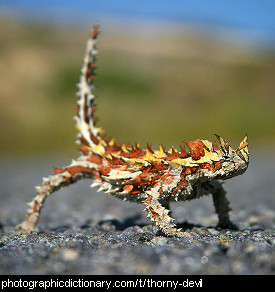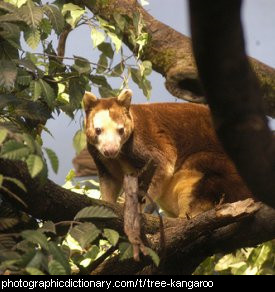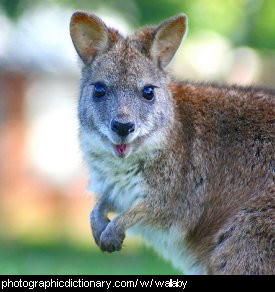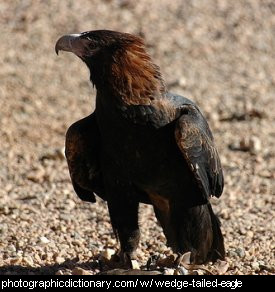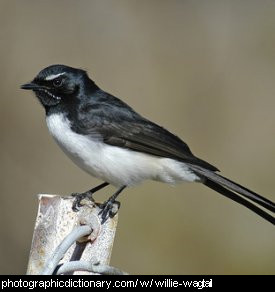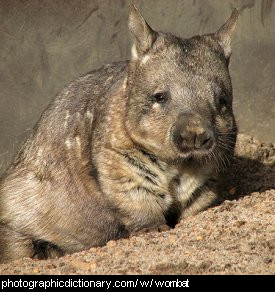Tis forThorny devil
Scientific name: moloch horridus
Tis forTree Kangaroo
Scientific name: dendrolagus ursinus
Tree kangaroos are very distant relatives of the kangaroo. They have adapted to life in trees, eating leaves, fruit and bark. Tree kangaroos are endangered, and are only found in the rainforests in mountainous areas of far north-eastern Australia, New Guinea and some islands in the same area.
Scientific name: family: macropodidae
Video: view
Wis forWedge tailed eagle
Scientific name: aquila audax
The wedge-tailed eagle is the largest eagle in Australia, and one of the largest in the world with a wingspan of around 2.5 metres. It eats any animal that is small enough for it to catch, including rabbits, small kangaroos and lambs.
Wedge-tail eagles will also eat dead animals they find, and are commonly seen eating by the roadside eating kangaroos that have been hit by cars.
Wis forWillie Wagtail
Scientific name: rhipidura leucophrys
The willie wagtail, or willy wagtail, is a small, black and white songbird found in Australia and Indonesia. They are called wagtails because of their habit of waggin their tail backwards and forwards as they hop around. They eat insects, and are a common sight in backyards in Australia. They are aggressive and can be seen chasing larger birds and even cats out of their territory.
Scientific name: family: vombatidae
Wombats are a marsupial that lives in Australia. Marsupials are animals that keep their babies in pouches. The wombat's pouch faces backwards so it doesn't fill up with dirt while the mother wombat is digging. Wombats dig large systems of burrows, both to live in and while looking for roots to eat. The closest relative of the wombat is the koala.




